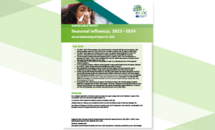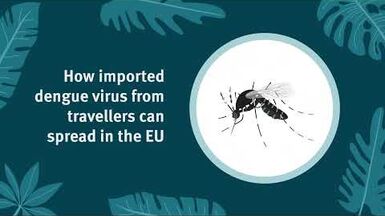Seasonal influenza - Annual Epidemiological Report for 2023/2024
The 2023−2024 influenza season was a short flu season compared with the previous seasons, with sentinel positivity above the 10% threshold for 15 weeks compared with 25 weeks in 2022–2023. The 2023−2024 season saw influenza activity return to patterns observed before the COVID-19 pandemic, although there were variations in timing and intensity across different countries.
The percentage of positive specimens peaked at 39% in week 52, 2023. This was followed by a decrease until week 2, 2024, when it reached 29% positivity, before rising again to fluctuate around 35% positivity between weeks 3 and 6, 2024. The threshold of <10% positivity was passed in week 12, indicating the end of the seasonal influenza epidemic.
In all surveillance systems, influenza A(H1N1)pdm09 viruses predominated during the season, followed by A(H3N2). Type B viruses were more prevalent from week 13 onward. Most genetically characterised influenza viruses fell within clades of the recommended vaccine components, but some A(H3N2) viruses were antigenically distinct from the vaccine viruses.
Interim vaccine effectiveness estimations for the 2023−2024 season have been reported by the ECDC Vaccine Effectiveness, Burden and Impact Studies (VEBIS) multi-country network, with data collected from 15 European countries submitted from multi-country primary care and hospital study sites between September 2023 and January 2024. These data indicated that up to 51% (95% CI:41–59) and 38% (95% CI: 27 to 48) of vaccinated individuals in primary care and hospital settings, respectively, were protected against influenza. During 2023−2024, there was an increase in the influenza viruses with antiviral resistance against oseltamivir compared with the 2022−2023 season. Thirty-four influenza A(H1N1)pdm09 viruses and one influenza type B/Victoria virus were reported with reduced susceptibility against oseltamivir,
Download







